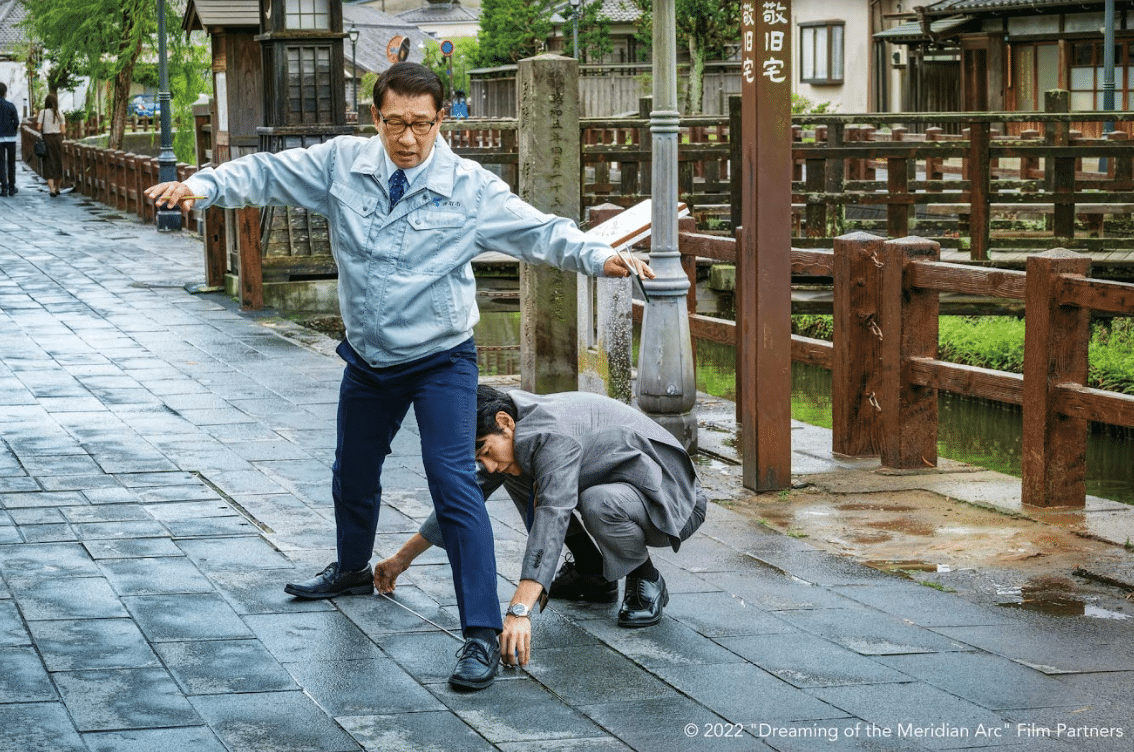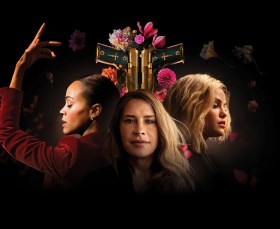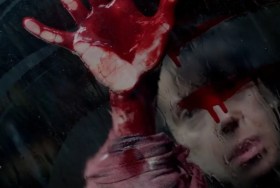Some kids love to kick a ball about. Young me? I’d rather lose myself in the intricate contours of Middle Earth, as traced by J.R.R Tolkien in the opening pages of his fantasy epic The Lord of the Rings. A gateway drug of sorts, these imagined worlds hooked me into the real deal. I relished visiting far-flung countries drawn in minute detail in atlases that weren’t always up to date with geo-political changes, or delving deep into design-driven depictions like Transport for London’s much-admired and reproduced tube map.
All of which makes me a market-researched easy target for the opening night movie of this year’s Japanese Film Festival, Dreaming of the Meridian Arc, and the incredible true story it relays.
During the Tokugawa shogunate of the Edo period (1603–1868), impassioned cartographer Inō Tadataka set off on foot with an improbable mission: to chart the shape of Japan using only his keen eye for stargazing and his personal foot span.
At 55 years old, Inō was already impressively seasoned for life-expectancy rates at that time. It is even more remarkable, then, that this spry figure with a keen eye on destiny trod on undaunted for 17 years, gradually building up political support and a dedicated team, until his death at a staggeringly lucky 73.
The only wrinkle? It’s possible that, despite this extended run, he never lived to see the completion of his painstakingly hand-drawn work, beautifully inked on 214 individual sheets.
After the Flowers director Kenji Nakanishi’s playful not-quite biopic Dreaming of the Meridian Arc makes the most of this unfortunate twist in an intriguingly metatextual fashion. Opening on a ceremonial mourning of Inō, we never actually see the revered historical figure, only the outline of his body under cloth, resembling the inky undulations of Mount Fuji as portrayed on his beloved map.
It’s really about the endeavours of the team he assembled In Edo – now known as Tokyo – and their attempt to secure his place in history by fudging the details of his passing at great personal risk. The shogun does not take kindly to being deceived, after all.
Contested stories
But the film isn’t a straight historical retelling, either. Instead, it’s framed as a somewhat kooky commentary on the vexed art of retelling contested stories.
And so, in contemporary Katori City, we meet the bureaucratic boss Yasuharu Ikemoto (Kiichi Nakai, 47 Ronin) and his somewhat hapless team – think The Office meets Utopia but slightly less incompetent. Most notably, they include Death Note’s Ken’ichi Matsuyama and No Actvity’s Yukino Kishii. The gang are tasked by Sailor Moon star Keiko Kitagawa’s tourism bigwig to big up the local area in an appealing fashion. Ikemoto hits on valorising the achievements of Inō – who was born in the Kazusa Province village of Ōzeki now encompassed by Chiba Prefecture – with a year-long historical drama made for TV.
Somehow this ambitious overreach gets greenlit, but immediately hits a wall. Kato (Isao Hashizume), the revered but elusive screenplay writer Ikemoto’s determined to recruit, at first refuses, then reveals the kink in the story that would require a shift of focus towards Tokyo and away from Katori.
What makes the dual timeline pretty cute is that the players in each era are depicted by the same cast, with knowing nods as to how times have changed.
If the film’s measured pace is a little drawn out, at two hours, then it’s worth it for the sheer geeky joy of marvelling over such commitment to an improbable task. This map was painstakingly drawn long before planes were invented, thanks to Inō’s vision and niftily practical solution.
And if, like me, cartography floats your boat, it’s interesting to note that the map was at least partly inspired by the not-entirely friendly arrival of Russian ships on Japan’s then-isolated shores.
For all that Dreaming of the Meridian Arc celebrates the indomitable determination of teamwork and the nameless faces behind revered historical figures, it is undoubtedly a tribute to the artefact itself.
Two simple shots deliver the shiver of goosebumps experienced by several characters. One is the overlaid reveal, in a modern-day Katori museum, of just how close Inō’s coastal outline of Japan got to the actual borders as confirmed by satellite. The second, set in the past and marking the final act, is a beautiful shot caught in dreamy half-light that finally unveils the human scale of the completed map. Both scenes are worth the ticket price alone in a sweetly reverential tale that nevertheless draws on a little bit of the pioneer spirit that allowed a country its first gasp-inducing glimpse at its whole.
The Japanese Film Festival runs until 14 December 2022 in various Australian cities. Visit the festival website.
Actors:
Director:
Format: Movie
Country:
Release:





